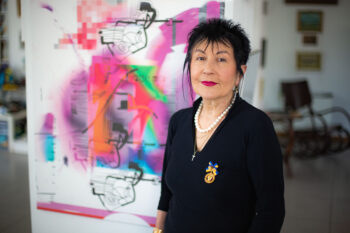By Marni Pilafian
RICHMOND, Va. — William Saroyan might have been thinking about the small Armenian community in Richmond Virginia when he wrote, “For when two of them meet anywhere in the world, see if they will not create a new Armenia.” The 8-member Armenian Genocide Centennial Committee of Central Virginia (AGCCCV) was formed under the guidance of Father Mesrob Hovsepyan, who had encouraged members to spearhead events in our region. Little did he know, when he transferred to the St. Gregory the Enlightener Church in White Plains, NY, a month later, what an impact our small church of 125 active members would have on the centennial commemorations throughout the American diaspora. Other parishes have asked us how we accomplished what we did. We are indeed small in numbers; but like 10-inch sticks of dynamite, we pack a punch. In fact, our community members made our voices heard throughout five events.
In November 2014 Bedros Bandazian and Sona Kerneklian Pomfret, both members of the Armenian Genocide Centennial Committee of Central Virginia asked for participation by the Virginia Council of Churches in November 2014 to join the genocide centennial commemoration. The Council agreed to participate and issued a proclamation to help raise awareness of the Armenian Genocide and to help prevent future atrocities. The Reverend Jonathan Barton, General Minister of the Virginia Council of Churches, requested that all member churches of the Virginia Council of Churches, on Sunday April 19, pray en masse from their own pulpits, for the souls of the victims of the Armenian Genocide and for all genocide victims and their surviving families, past and present. This was a “high five” moment for the Centennial Committee, inspiring them to launch the several events to come.
“There is a sea change in awareness of the Armenian Genocide,” stated Khoren Bandazian, a native of Richmond and Chairman of the Armenian Genocide Centennial Committee of America, Eastern Region, in a letter written to our committee.
“While these national/ international events dominate the media, it is the local community events that can have the most lasting impact. For a small community, you do big things and it does not go unnoticed.”
In fact, our community members made our voices heard in two different political venues: at the office of a U.S. Congressman, and at the City of Richmond Council Chambers.







